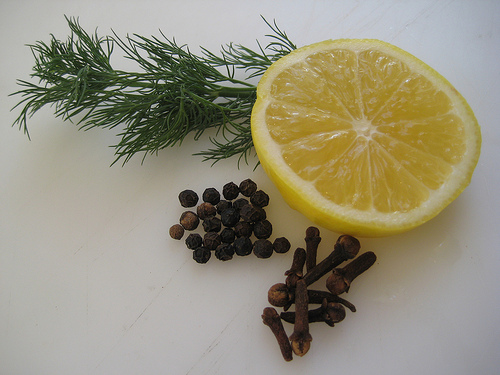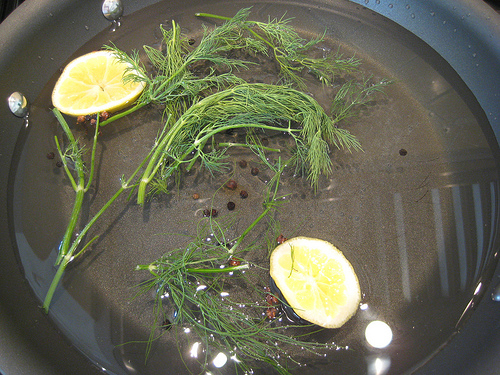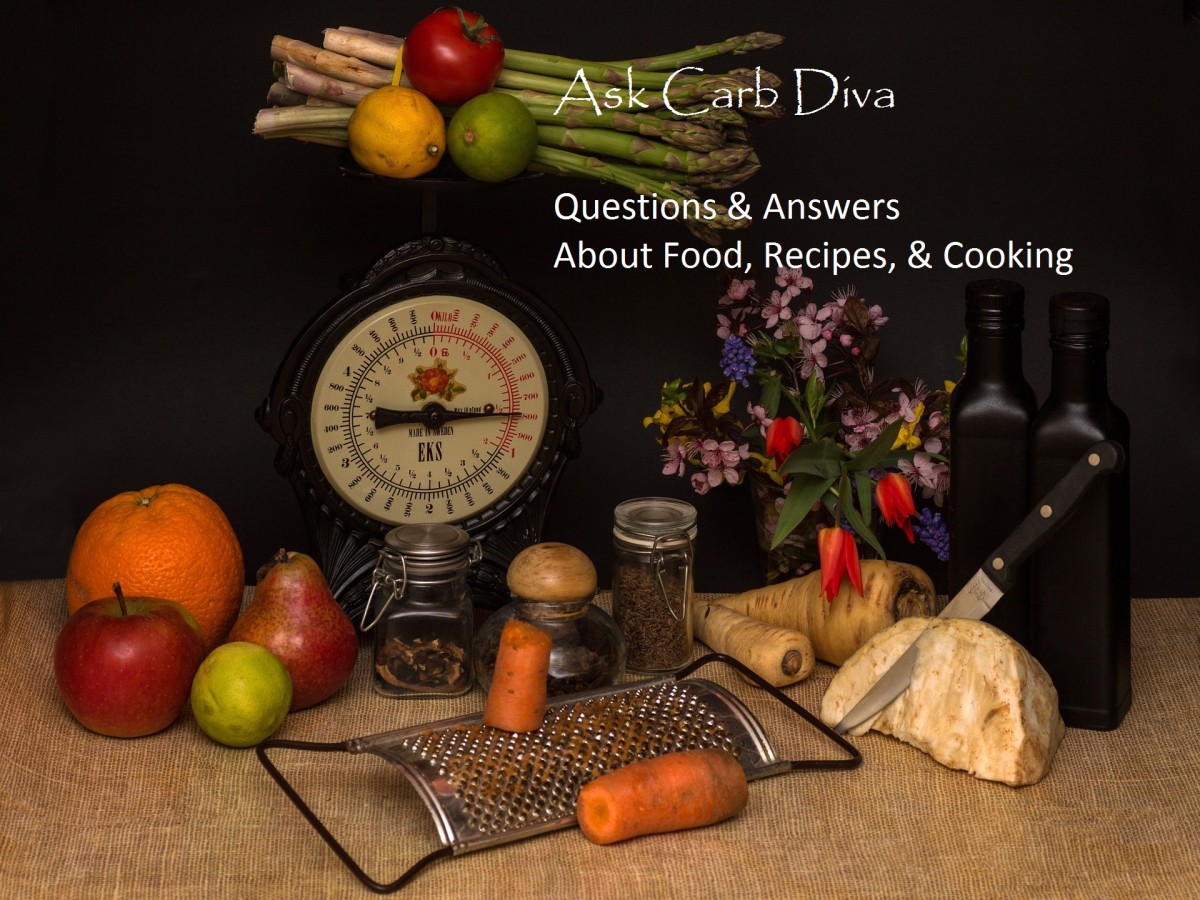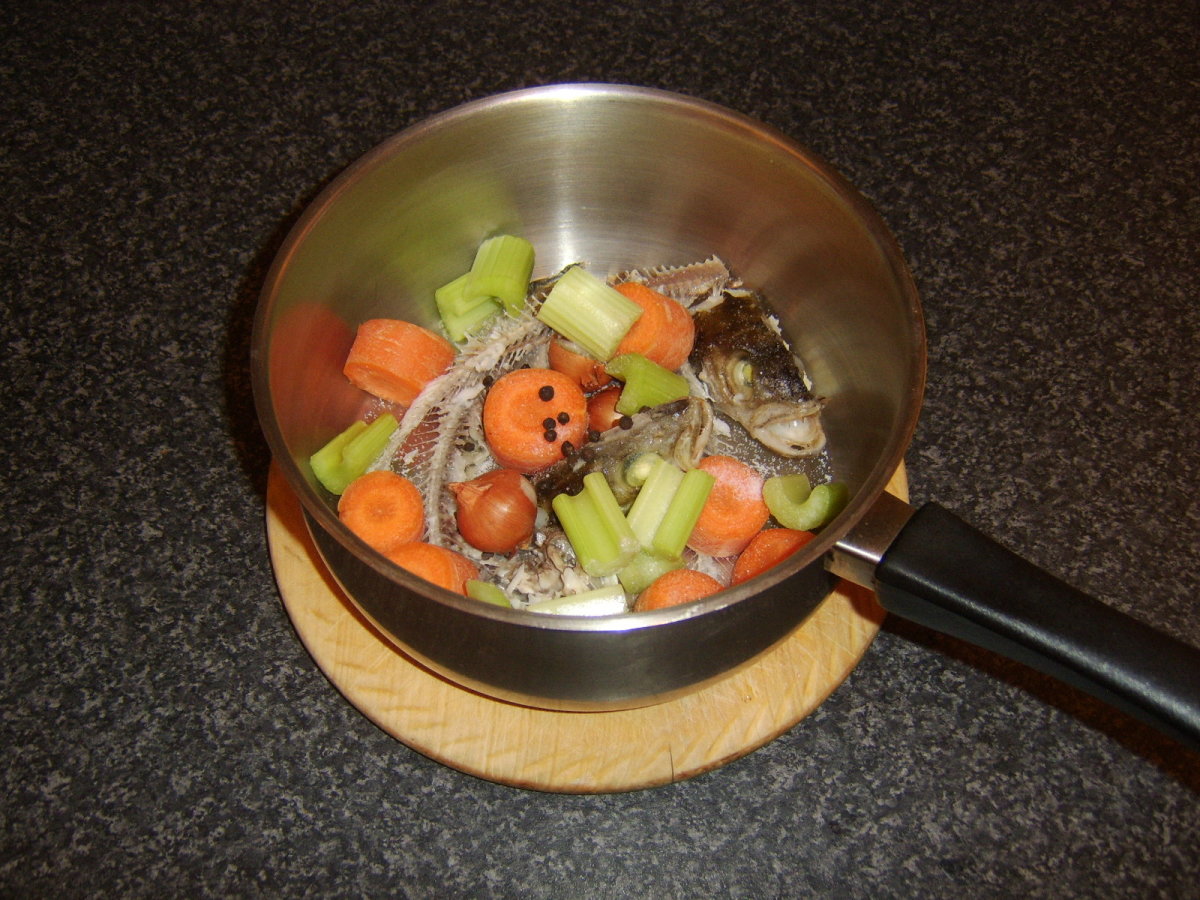What is Court Bouillon?


Court Bouillon is a great tool in the kitchen – but it’s not very well known outside of the restaurant kitchen. There’s no good reason for this – since it’s easy, inexpensive, and a great means by which to impart some serious flavor to delicate meats and vegetables.
In a nutshell, court bouillon is nothing but an acidulated vegetable stock. (Acidulated just means you added an acid).
I personally love the name ‘court bouillon’. It makes me think of a lovely, delicate little crystal clear soup served to a queen. *sigh*. In reality the rough translation is “boiled briefly” or “short boil”. See? French sometimes is better in the imagination.
But that’s a good illustration of this point – it’s not a difficult thing to do – it’s just has a fancy name. And the payoff is well worth the little tiny bit of effort.
The closest kitchen relative to the court bouillon is a broth or stock. There are several major differences though.
- Cooking time – broths and stocks simmer for hours, while a court bouillon takes a few minutes – in any case no more than half an hour.
- Acid – lemon, wine or vinegar are part of the court bouillon – because they tenderize, and help firm soft proteins. They are not added to broths or stocks during the cooking process.
- Salt is not added to broth or stock during the cooking process because as the liquid reduces, the salt is concentrated. The result could be far too salty to eat. You do season a court bouillon at the beginning though. Additionally, broths and stocks are made from meats and bones, (roasted or not), and therefore contain gelatin. I’ll elaborate on this further in Broths and Stocks, since these are yummy little elaborate topics by themselves.
Shellfish – lobster, prawns, shrimp, crawfish and crabs – all manner of fish – trout, pike, sole, tuna, salmon (all of them!) – chicken, eggs, vegetables – these are all candidates for a nice little hot tub dip in a court bouillon.
Court bouillon
1 cup champagne or white wine (and yes, leftover or stale is fine)
2 cups water
1 small bunch parsley
8-10 black peppercorns
1 lemon, sliced
1 rib celery, washed and roughly chopped
1 carrot, peeled and roughly chopped
1 small onion, peeled and halved
4-5 sprigs fresh thyme
1 bay leaf
2 tsp kosher salt
Combine all ingredients in a stock pot or saucepan and bring to a boil. Reduce heat and simmer for about 10-20 minutes. You can let it go for half an hour if you wish. All you want to do at this step is extract the flavor from your ingredients into the liquid.
Strain the court bouillon through a fine mesh sieve and then through a layer or two of cheesecloth (honestly, I often skip the cheesecloth step). The court bouillon is ready to use. If you wish, throw it in the fridge for a few days – no more than 3-4 – or stick it in the freezer for a couple of months.
At this point – you’re ready to use it.
Once you’ve used the court bouillon once, you can reuse it once. Simply strain it, bring it to a full boil for two minutes, than back in the fridge or freezer. To use it again, simply add enough water, wine or broth to bring the cooking level back up to the original point. I honestly don’t like reusing it – it takes on the flavors of the previous occupant. For example, if you use it to cook fish – especially a strongly flavored fish like salmon or tuna, then you’re subsequent dish will take on the flavor of salmon or tuna. Ewww. And this is just too simple and inexpensive to make to worry about using it more than once.
A couple of notes.
- The ingredient list above is very loose. There really are no hard and fast rules, with the exception of the vegetables and the salt and pepper. So I suppose you could make a court bouillon with only onion, celery, carrot and salt and pepper.
- Change out the acid based on what you are going to poach in the liquid. If cooking an oily fish, I use the wine and lemon both. For chicken I drop the lemon sometimes. And for eggs I get rid of it entirely and swap the wine for a tablespoon or two of high quality vinegar.
- Remember – the flavors in the court bouillon will impart themselves to your dish. So if you like or don’t like something – adapt!
- I can’t give you cooking
times on the court bouillon side of the equation, since that depends on what food you are cooking, as well as the
thickness of the food. For example, the salmon fillets I did last night
took only five minutes of poaching, and a five minute rest in the court
bouillon. However, a steak cut from the same fish would have a different
time due to its different shape and thickness. I can ask however, that you stay tuned. Cooking times will be forth coming from the articles on the individual foods.
More Foodie Info
- The Thrillbilly Gourmet
Combining classic technique with everyday food for spectacular results!








